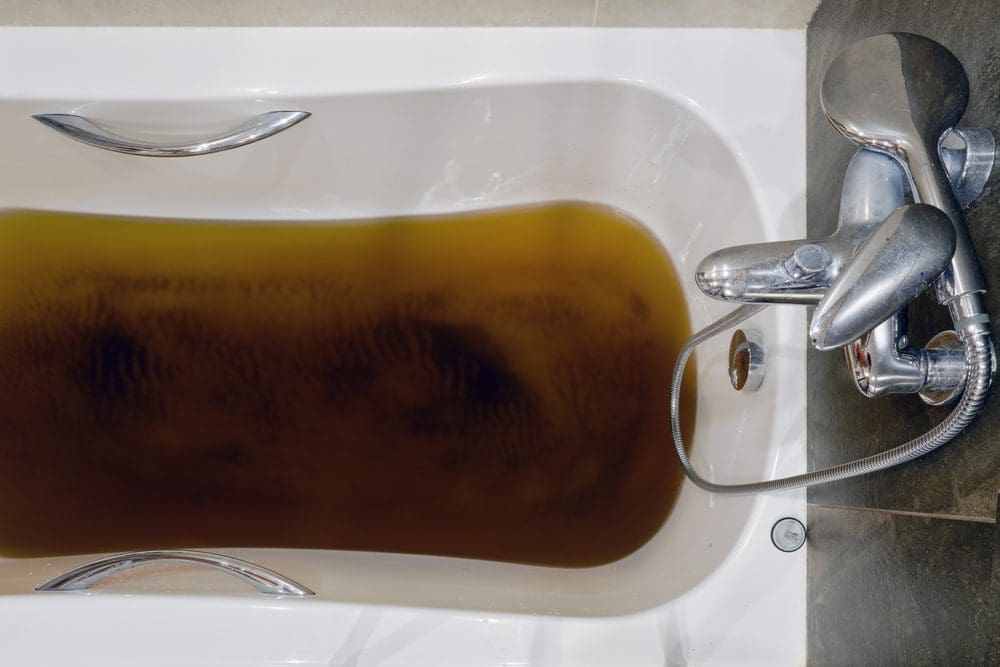Recommended Reasons for Waste Coming Up in the Bathtub
Recommended Reasons for Waste Coming Up in the Bathtub
Blog Article
They are making a number of great points about Why is Sewage Backing Up Into My Bathtub? as a whole in this article underneath.

Sewage back-up in the tub can be a traumatic and unhygienic trouble for any home owner. Not just is it inconvenient, but it also presents significant wellness threats and indicates underlying issues with the plumbing system. Comprehending why sewer is turning up through the bathtub is essential for taking appropriate activity to deal with the issue successfully.
Introduction to the Problem
Typical Factors for Sewage Backup
Clogs in the Sewer Line
One of one of the most common causes of sewer backup is an obstruction in the sewer line. This can happen because of the buildup of particles, grease, or foreign things in the pipes, preventing proper flow and triggering sewer to back up right into your tub.
Tree Origin Intrusion
Tree roots seeking wetness and nutrients can infiltrate drain lines via tiny splits or joints. Over time, these origins can expand and broaden, creating substantial damages to the pipes and resulting in sewer back-up issues.
Understanding the Issue
When sewage draws back up right into the bath tub, it's a clear indication of an issue with the water drainage system. The wastewater that should be streaming away from your home is rather discovering its way back right into your living space, which can cause significant damages and health hazards.
Prospective Causes
Several elements can contribute to sewer backup in the bath tub. From blockages in the sewage system line to problems with the plumbing framework, identifying the origin is vital for locating a service.
Aging Infrastructure
Older homes may have outdated plumbing systems that are much more vulnerable to corrosion, cracks, and degeneration. As pipes age, they end up being a lot more prone to leaks and blockages, raising the probability of sewer backup events.
Heavy Rainfall or Flooding
During periods of heavy rainfall or flooding, the drain system may become overwhelmed with excess water, triggering back-ups and overflows. This can lead to sewer supporting right into bathtubs and various other components inside the home.
Signs of Sewage Back-up
Foul Odors
Unpleasant odors originating from drains pipes or fixtures, specifically in the restroom, might suggest sewer back-up problems. These smells are commonly strong and persistent, indicating a trouble that needs instant focus.
Slow Draining Fixtures
Tubs, sinks, and commodes that drain gradually or otherwise whatsoever could be experiencing sewer back-up. If multiple fixtures are impacted at the same time, it's most likely that the issue stems from a typical factor, such as the main drain line.
Gurgling Noises
Strange gurgling or gurgling sounds originating from drains pipes when water is running elsewhere in your house are a measure of air caught in the plumbing system. This air buildup can arise from sewer backup and should be explored promptly.
Wellness Threats Connected With Sewer Back-up
Contamination of Water Supply
Sewer back-up can pollute the water in your house, posturing a serious health and wellness danger to you and your family members. Direct exposure to contaminated water can cause intestinal issues, skin infections, and other health problems.
Mold and mildew Development
Dampness from sewage back-up can create suitable conditions for mold and mildew development in your house. Mold and mildew spores can exacerbate respiratory system troubles and trigger allergic reactions in sensitive individuals, making punctual cleaning essential.
Spread of Disease
Sewage consists of dangerous bacteria, infections, and parasites that can create a variety of conditions, consisting of hepatitis, cholera, and gastroenteritis. Coming into contact with sewer or infected surface areas places you in danger of infection.
Tidying up After Sewage Back-up
Sanitation Procedures
Thoroughly disinfect and sanitize impacted locations after sewage backup to eliminate harmful bacteria and avoid mold development. Usage proper cleaning items and protective equipment to make sure secure and reliable clean-up.
Repair of Influenced Areas
Fix any kind of damages to floor covering, walls, or fixtures caused by sewer back-up. Depending upon the level of the damage, you may need to replace carpeting, drywall, or various other products to recover your home to its pre-loss condition.
Immediate Actions to Take
Turning Off Water Supply
In the event of sewage back-up, it's vital to turn off the water system to avoid more contamination and damage. Find the main water shutoff valve in your home and shut it off up until the problem can be solved.
Getting In Touch With a Specialist Plumber
Handling sewer backup is not a DIY task. Get in touch with a licensed plumber with experience in taking care of sewage-related concerns to analyze the situation and do necessary repairs or cleanings.
Preventing Contact with Infected Water
Up until the sewage backup is settled, prevent contact with polluted water to avoid the spread of bacteria and virus. Use safety equipment if you must be in the affected area and clean your hands thoroughly later.
Preventive Measures
Regular Maintenance of Sewer Lines
Set up normal inspections get more info and upkeep of your drain lines to determine and attend to potential issues before they escalate into significant issues. This can consist of clearing out particles, evaluating for tree root invasion, and fixing any kind of broken pipelines.
Installing Backwater Shutoffs
Think about installing backwater valves in your plumbing system to prevent sewage from flowing back into your home during periods of heavy rainfall or flooding. These shutoffs immediately close when water draws back up, securing your property from contamination.
Appropriate Disposal of House Waste
Stay clear of flushing anything aside from toilet paper and human waste down the toilet to avoid clogs and blockages in the drain line. Dispose of oil, oil, and various other household chemicals properly to minimize the risk of plumbing issues.
Why Is Water Backing Up in My Bathtub When I Flush My Toilet?
What to do about a sewer line clog
First, don’t bother with plunging. No amount of plunging will dislodge the clog in a sewer line. The clog is too far away. Plungers are for clogs in the toilet itself, not the sewer line. Plus, the most likely causes of a sewer clog are:
Tree roots Flushed toys or feminine products Grease buildup Those items don’t move easily. And in the case of tree roots, the roots need to be cut out of the pipe and the pipe will need to be repaired.
You’ll need a closet auger. A closet auger is a type of plumber’s snake with a protective cover to keep from scratching the delicate porcelain toilet. If the clog is further down, you may need to remove the toilet or use one of your cleanouts to get to the clog.
We also recommend doing a video inspection of the drain to ensure that the cause of the clog has been completely removed. Otherwise, you could have the same problem again in a few days or weeks.
https://mspplumbingheatingair.com/blog/why-is-water-backing-up-in-my-bathtub-when-i-flush-my-toilet

I am just very drawn to Why sewage is coming up through your bathtub and I hope you appreciated my article. You should take a moment to share this write-up if you liked it. We thank you for your readership.
Suggested Site
Report this page